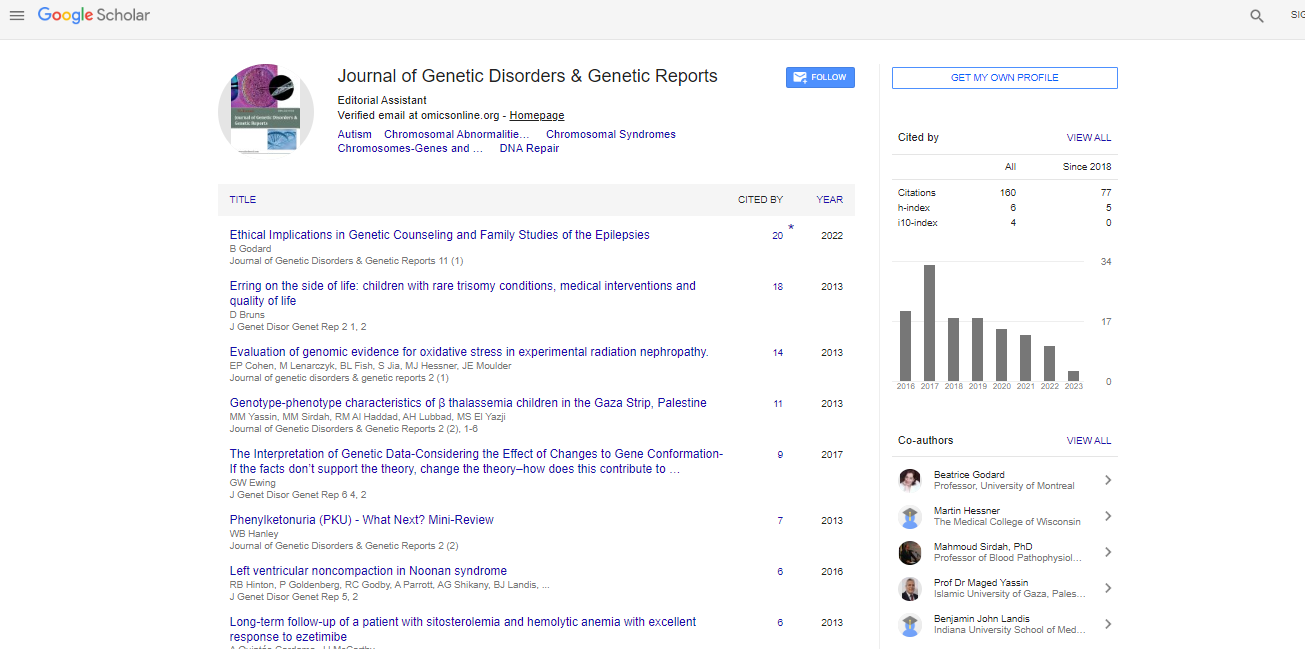Research Article, J Genet Disor Genet Rep Vol: 4 Issue: 1
Mutations in the RB1 Gene in Argentine Retinoblastoma Patients and Uncommon Clinical Presentations
| Ottaviani Daniela1, Parma Diana1, Ferrer Marcela2, Giliberto Florencia1, Luce Leonela1, Alonso Cristina3 and Szijan Irene1* |
| 1Genetica y Biologia Molecular, Facultad de Farmacia y Bioquimica, Universidad de Buenos Aires, Argentina |
| 2Division de Neurocirugia, Hospital de Clinicas “Jose de San Martin”, Universidad de Buenos Aires, Argentina |
| 3Departamentos de Hemato-Oncologia, Hospital Garrahan, Buenos Aires, Argentina |
| Corresponding author : Szijan Irene Genetica y Biologia Molecular, Facultad de Farmacia y Bioquimica, Universidad de Buenos Aires, 1113 Buenos Aires, Argentina Tel: +5411 5950 8805 E-mail: iszijan@ffyb.uba.ar |
| Received: February 17, 2015 Accepted: February 21, 2015 Published: February 24, 2015 |
| Citation: Ottaviani D, Parma D, Ferrer M, Giliberto F, Luce L et al. (2015) Mutations in the RB1 Gene in Argentine Retinoblastoma Patients and Uncommon Clinical Presentations. J Genet Disor Genet Rep 4:1. doi:10.4172/2327-5790.1000120 |
Abstract
Mutations in the RB1 Gene in Argentine Retinoblastoma Patients and Uncommon Clinical Presentations
Background: Retinoblastoma, the most common ocular cancer of childhood, is caused by inactivation of the RB1 tumor suppressor gene in the developing retina. It may occur as unilateral, bilateral or rarely as multicentric retinoblastoma, including pineal or suprasellar tumors. Being the retinoblastoma a hereditary cancer, identification of the causative mutation is important for risk prediction in the family members. An early detection of tumor is critical for survival and eye preservation. Screening for RB1 mutations is important for early tumor detection, critical for survival and eye preservation. Purpose: To identify causative RB1 mutations in retinoblastoma patients with different clinical presentations, some of them with a rare multicentric retinoblastoma or with a second non ocular malignancy, as well as the rare association with down syndrome. A comprehensive approach was used to identify the mutations and to detect children with a hereditary condition. Methods: A cohort of 20 patients with unilateral, bilateral and multicentric retinoblastoma was studied. Blood and tumor DNA was analyzed by sequencing, segregation of polymorphisms and MLPA analyses. Some of the rare mutations were validated by cloning or by Real-Time PCR Results: Six germline and seven somatic mutations were identified; they include nonsense, frameshift, splice mutations and gross rearrangements, four of them novel. Three out of four nonsense/ frameshift germline mutations were associated with severe phenotype: bilateral and multicentric retinoblastomas. The at-riskhaplotype was identified in a familial case including one patient with osteosarcoma; it was useful for detection of mutation carriers. Conclusions: This study allowed us to identify causative RB1 mutations, including several novels. Some patients showed uncommon clinical presentations of retinoblastoma. These data are significant for genetic counseling. Our results support the relevance of carrying out complete genetic screening for RB1 mutations in both constitutional and tumor tissues
 Spanish
Spanish  Chinese
Chinese  Russian
Russian  German
German  French
French  Japanese
Japanese  Portuguese
Portuguese  Hindi
Hindi 



